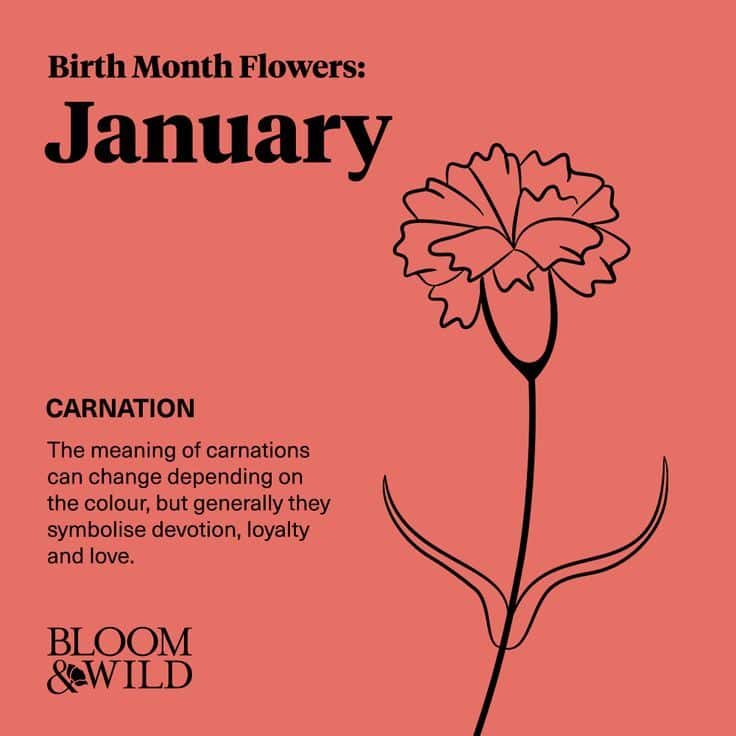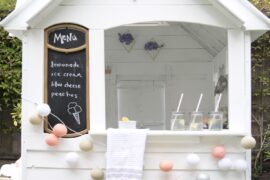Embrace the Beauty of January Birth Flowers – A Parent’s Guide!
Welcome, new and expecting parents! If your little bundle of joy is arriving in the chilly embrace of January, you’re not just welcoming a new life into the world, but also the opportunity to cherish a special symbol for your child’s birth month. The birth flowers of January offer a beautiful way to celebrate and commemorate the entry of your baby into your family and the world!
Understanding the Significance of January Birth Flowers
Every month has its own unique birth flower, and for January, it’s the enchanting carnation and the graceful snowdrop. These flowers not only represent the qualities of individuals born in this month but they’re also steeped in history and rich symbolism. We’ll guide you through their meanings, how to care for them, and even creative ways to incorporate these blooms into your life!
The Carnation: A Bloom of Affection
The carnation, with its ruffled petals and variety of colors, carries deep significance. Typically, it symbolizes love, fascination, and distinction. Moreover, each color has its own unique representation:
- Red carnations symbolize deep love and affection, perfect for expressing your unconditional love for your newborn.
- White carnations signify pure love and good luck, echoing the innocence and purity of your little one.
- Pink carnations are associated with gratitude and a mother’s undying love, reflecting the bond you will share with your child.
Integrating carnations into your life can remind you of the love and bond you share with your January baby. Whether you add these flowers to your home decor or plant them in your garden, they serve as a constant symbol of your child’s birth month!
The Snowdrop: A Symbol of Hope
Less familiar but equally charming is the snowdrop, a delicate white flower that pushes through the snow to bloom in January. It represents hope and purity, resonating the fresh start and new beginnings that come with the entrance of your newborn.
How to Care for January Birth Flowers
Caring for carnations and snowdrops can be a delightful hobby, and what’s more, it serves as a wonderful educational journey you can share with your child as they grow. Here’s a quick guide to get you started:
Caring for Carnations
Carnations prefer well-drained soil, full to part sun, and a little bit of attention to flourish. When grown indoors, they’ll need bright, indirect light. Water them regularly but allow the soil to dry out between waterings. A monthly feed during the growing season will help them bloom to their fullest.
Caring for Snowdrops
Snowdrops are hardy little flowers that are incredibly easy to care for. They thrive in rich, moist soil and partial shade. They’re best planted in the fall as bulbs and will delight year after year with very little maintenance. The beauty of snowdrops is their resilience and the way they signify strength and hope, much like the journey of parenting itself.
Whether you’re planting these flowers in your garden or simply enjoying their beauty in a vase, the January birth flowers have a way of touching hearts with their simple charm.
Creative Uses of January Birth Flowers
As the years go by, you’ll find joy in commemorating your child’s birth month with these beautiful flowers. From creating DIY carnation bouquets for a January birthday celebration to planting snowdrop bulbs that will bloom each year as your child grows, there are countless ways to make the birth flowers meaningful. Maybe you’ll dabble in some floral crafts, create a birth flower-themed nursery, or even design custom jewelry inspired by carnations and snowdrops to carry a piece of your child’s birth month with you every day.
January birth flowers are not just a symbol of the first month of the year. They represent the new beginning, the joy, and the pure love that comes with being a parent. Embrace these blooms as you embark on the amazing adventure of parenthood, and create lasting memories inspired by the delicate beauty of carnations and the hopeful spirit of snowdrops.
In the next section of our comprehensive guide, we’ll delve into the fascinating history of January birth flowers, explore more in-depth meanings behind their symbolism, and share engaging activities to introduce your child to the wonders of these botanical beauties. So cuddle up with your little one and continue to explore the natural wonders associated with their birth month!.

5 Essential Tips for Parents Preparing for Birth Flower January
Welcome to the world of birth flowers! As a parent to a January baby, you have the unique opportunity to incorporate the carnation and snowdrop into your family’s traditions and memories. Here are five essential tips to prepare for the birth flower of January:
1. Learn the Language of Flowers
The first step is to become familiar with the language of flowers, known as floriography. Carnations and snowdrops speak volumes without saying a word. For example, red carnations signify deep love and affection, while white ones represent pure love and good luck. Snowdrops symbolize new beginnings and hope. Understanding these meanings will allow you to select the most appropriate colors and arrangements for celebrating your new arrival.
2. Choose the Right Environment
If you’re considering growing carnations or snowdrops, choose a suitable location in your garden or home. Carnations love the sunshine and well-drained soil, whereas snowdrops prefer cool, moist conditions with partial shade. Research the best environment for these flowers and prepare the soil accordingly. You can then plant these flowers as a way to mark your child’s birth and enjoy them for years to come.
3. Create Birth Month Traditions
Establishing family traditions around your child’s birth month can bring a sense of belonging and joy. Plan annual activities like planting new snowdrop bulbs or arranging a vase of beautiful carnations on your child’s birthday. You can also create lasting works of art, such as a pressed flower keepsake or family photo sessions with January birth flowers as a motif.
4. Educate Through Gardening
As your child grows, involve them in the care of their birth flowers. Gardening is not only a calming and engaging activity but also an educational one. It teaches responsibility, the wonders of the natural world and provides an opportunity to bond as a family. Labeling the plants with their names and care instructions will help your child take ownership and pride in their special flowers.
5. Think Beyond the Garden
Birth flowers can be celebrated in many ways beyond just gardening. Consider incorporating these flowers into your child’s everyday life. Floral motifs can be added to their room with wall decals, bedding, or artwork. You can even infuse bath time or bedtime stories with birth flower themes by choosing appropriate soaps or books that feature carnations and snowdrops.
Growing and embracing January birth flowers as part of your family culture will create a sense of identity and allow for the creation of beautiful memories and traditions. These blooms are not just a symbol of your child’s birth month but can become a cherished part of their life story and a testament to the joyous journey of parenthood.
Now that you’re equipped with these five tips to prepare for the birth flower of January, you’re ready to embrace the enchanting carnations and snowdrops with open arms! What better way to celebrate the arrival of your little one than with the timeless beauty of nature’s own blossoms?
Remember to keep an eye out for the next installment of our comprehensive guide, where we will dig into the captivating history of January birth flowers! Stay tuned to learn how these floral symbols have traveled through time, capturing hearts and nurturing souls in their gentle petals.
So, lovely parents, begin the enchanting journey into the world of birth flowers and let January’s blossoms of love and hope fill your home and heart.
See more great Things to Do with Kids in New Zealand here. For more information see here
Disclaimer
The articles available via our website provide general information only and we strongly urge readers to exercise caution and conduct their own thorough research and fact-checking. The information presented should not be taken as absolute truth, and, to the maximum extent permitted by law, we will not be held liable for any inaccuracies or errors in the content. It is essential for individuals to independently verify and validate the information before making any decisions or taking any actions based on the articles.




